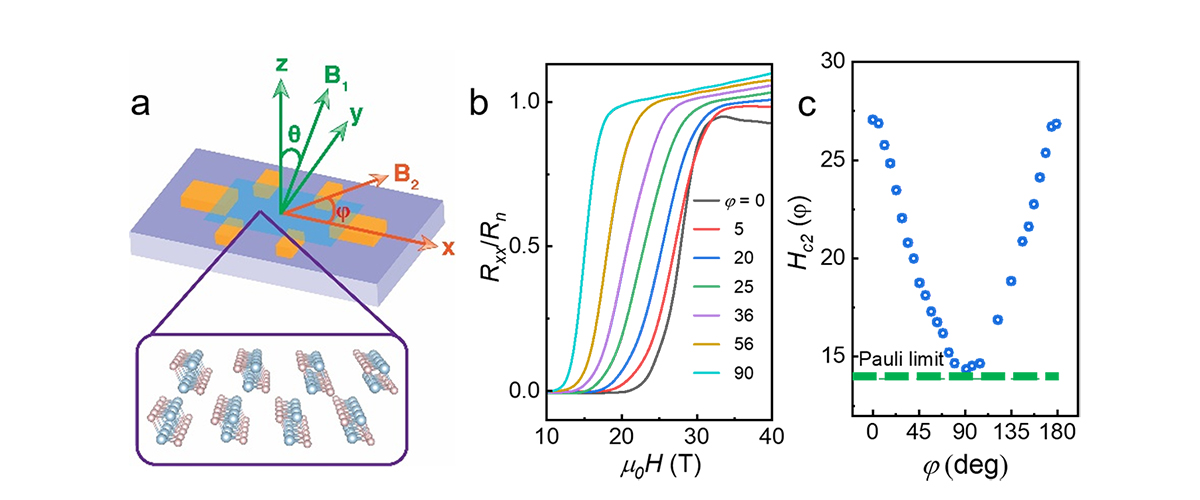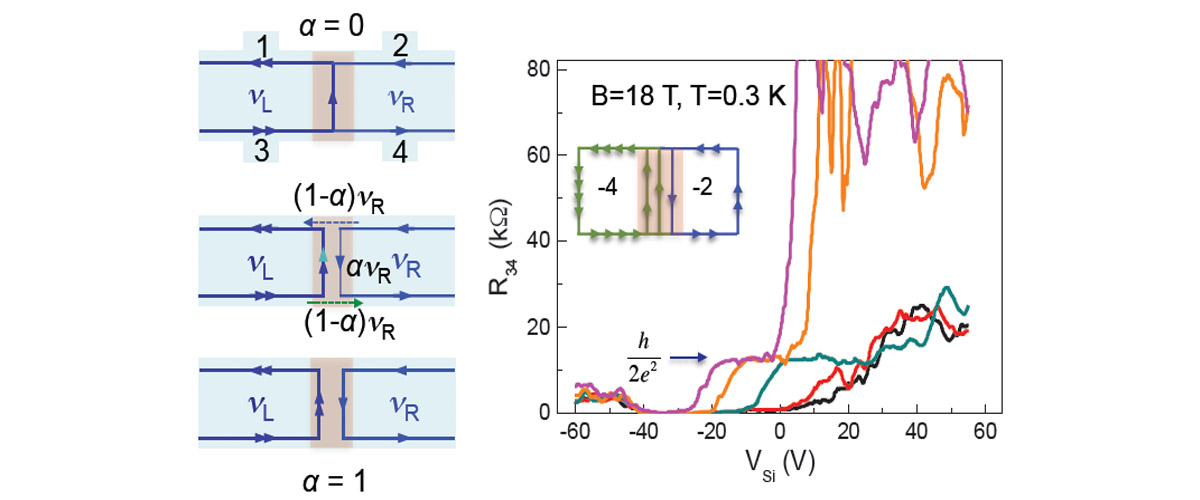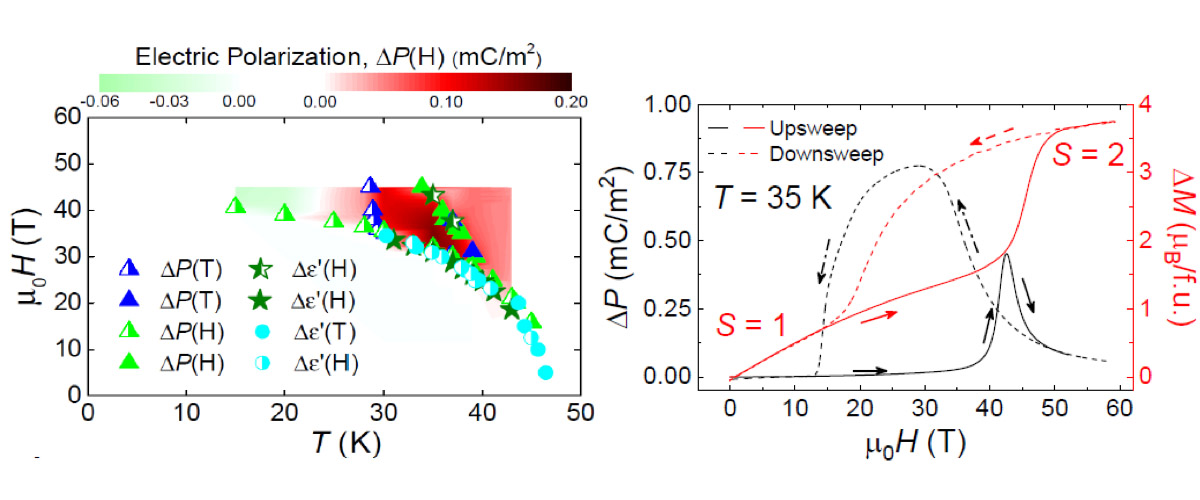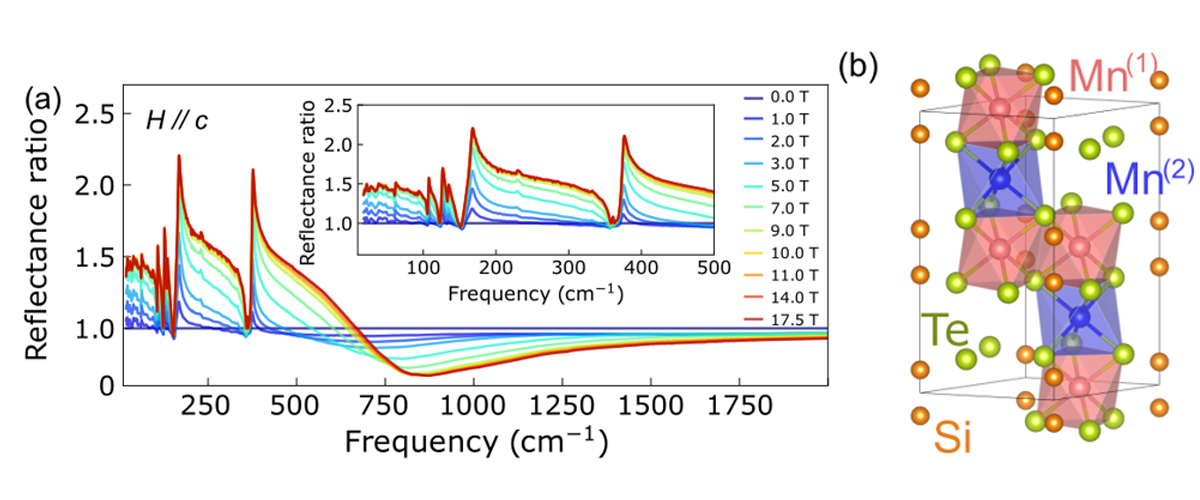What did scientists discover?
The combination of extremely high DC magnetic fields up to 41T and an in-situ sample rotation stage allowed the observation of a strongly anisotropic superconducting state that had not been observed previously. Additionally, MagLab users found in this material (1T′-WS2) an unprecedentedly high superconducting critical current density (17MA/cm2 at 0T) that exceeds all other known two-dimensional superconductors. By comparison, this critical current density here is 15 to 70 times larger is found in the superconductors presently used to commercially build superconducting magnets.
The band structure obtained via angle-resolved photoemission spectroscopy and first-principles calculations points to 1T′-WS2 possessing a Z2 topological invariant.
Why is this important?
High supercurrent densities in materials result in machines and devices that are efficient and much smaller, such as high-field magnets and high-performance superconducting spintronics. Furthermore, the simultaneous presence of topology and superconductivity in 1T′-WS2 establishes 1T′-WS2 as a topological superconductor candidate which is a favorable environment for non-Abelian anyons that could enable the construction of a fault tolerant topological quantum computer.
Who did the research?
Qi Zhang1*†, Md Shafayat Hossain1*†, Brian Casas2, Wenkai Zheng2, Zi-Jia Cheng1, Zhuangchai Lai3,4, Yi-Hsin Tu5, Guoqing Chang6, Yao Yao3, Siyuan Li3, Yu-Xiao Jiang1, Sougata Mardanya5, Tay-Rong Chang5, Jing-Yang You7, Yuan-Ping Feng7, Guangming Cheng1, Jia-Xin Yin1, Nana Shumiya1, Tyler A. Cochran1, Xian P. Yang1, Maksim Litskevich1, Nan Yao1, Kenji Watanabe8, Takashi Taniguchi8, Hua Zhang3,†, Luis Balicas2, M. Zahid Hasan1,9
1Princeton University; 2National High Magnetic Field Laboratory; 3City Univ. of Hong Kong; 4The Hong Kong Polytechnic Univ.; 5National Cheng Kung Univ.; 6Nanyang Technological University; 7National Univ. of Singapore; 8National Institute for Materials Science; 9Lawrence Berkeley National Laboratory
Why did they need the MagLab?
To observe the anisotropic superconducting state with high critical field, it was necessary to cool the sample down to 0.3K and apply very high magnetic fields (well above 30T). Indeed, the MagLab’s 41T resistive magnet with its high-precision in-situ rotator was essential to this experiment.
Details for scientists
- View or download the expert-level Science Highlight, Ultrahigh Supercurrent Density in a Two-Dimensional Topological Material
- Read the full-length publication, Ultrahigh supercurrent density in a two-dimensional topological material, in Physical Review Materials
Funding
This research was funded by the following grants: Z. M. Hasan (GBMF4547;DOE/BES DE-FG-288 02-05ER46200); L. Balicas (DE-SC0002613); N. Yao (DMR-2011750); G.S. Boebinger (NSF DMR-1644779)
For more information, contact Tim Murphy.






